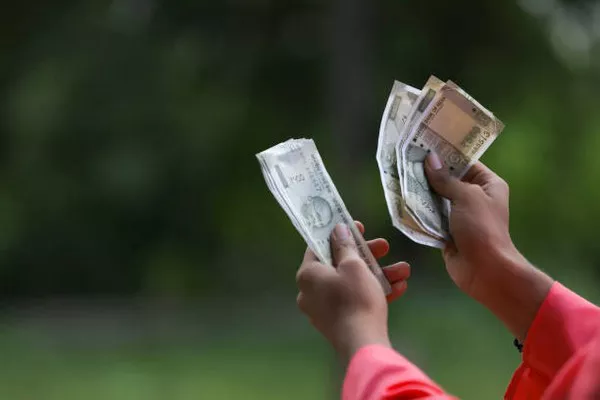Old Indian currency occupies a distinctive position in economic history, encapsulating the cultural, political, and economic journey of the nation. From the humble beginnings of cowrie shells and metal coins to the intricate paper notes of the British Raj and the subsequent transition into the modern rupee, each form of currency narrates a story of its era. In this article, we embark on a journey through the rich tapestry of old Indian currency, unraveling its evolution, significance, and lasting legacy.
Ancient Currency: From Barter to Coins
A. Barter System: Predecessor to Coinage
Origins and Functioning
The barter system, prevalent in ancient India, facilitated trade through the exchange of goods and services without a standardized medium of exchange.
Limitations and Transition
Despite its utility, the barter system had inherent limitations, leading to the gradual transition to metal coins as a more efficient medium of exchange.
B. Metal Coins: The Dawn of Monetary Systems
Earliest Coinage in India
The emergence of metal coins marked a significant milestone in Indian economic history, with archaeological evidence suggesting their usage as early as the 6th century BCE.
Types of Metal Coins
Metal coins varied in composition and design across different regions and dynasties, reflecting the diversity of India’s cultural and economic landscape.
Significance in Trade and Commerce
Metal coins facilitated trade, standardized transactions, and fostered economic growth by providing a universally accepted medium of exchange.
Medieval India: Dynastic Coinage and Trade Routes
A. Dynastic Coinage: Symbols of Power and Prosperity
Gupta Empire: Pioneers of Gold Coinage
The Gupta Empire was renowned for its issuance of gold coins, symbolizing imperial authority and economic prosperity.
Mughal Era: Splendor in Minting
The Mughal rulers continued the tradition of coinage, minting exquisite coins adorned with intricate designs and calligraphy.
Regional Variations and Influence
Regional powers minted their own coins, reflecting local traditions, languages, and cultural motifs, contributing to the diversity of Indian numismatics.
B. Trade Routes and Currency Exchange
Silk Road and Indian Ocean Trade
India’s strategic location along ancient trade routes facilitated the exchange of goods, ideas, and currencies, enriching its economic and cultural tapestry.
Impact on Currency Diversity
Trade routes catalyzed the circulation of diverse currencies, including Indian coins, across vast geographical regions, fostering economic integration and cultural exchange.
Role of Indian Currency in Global Commerce
Indian currency played a pivotal role in global commerce, serving as a medium of exchange in international trade networks connecting Asia, Africa, and Europe.
Colonial Influence: British Raj and Paper Currency
A. East India Company: Introduction of Paper Currency
Background and Necessity
The East India Company introduced paper currency to address the challenges of administering a vast empire and facilitating trade across diverse regions.
Adoption and Initial Challenges
Paper currency faced skepticism and resistance initially but gradually gained acceptance due to its convenience and utility in commercial transactions.
B. British Raj: Standardization and Modernization
Introduction of Rupee as Standard Currency
The British Raj standardized the Indian rupee as the official currency, establishing a uniform monetary system across the subcontinent.
Evolution of Paper Notes
The evolution of paper notes saw advancements in design, security features, and denominations, reflecting the growing sophistication of Indian monetary policies.
Impact on Indian Economy and Society
British colonial policies, including monetary reforms, had far-reaching implications on India’s economy, society, and political landscape, shaping its trajectory into the modern era.
Post-Independence Reforms: From Decimalization to Modern Rupee
A. Decimalization and Monetary Reforms
Transition to Decimal Currency System
India embarked on a series of currency reforms, including decimalization, to simplify transactions and streamline monetary calculations.
Demonetization Episodes and Economic Implications
Demonetization episodes aimed to curb black money, promote digital transactions, and combat corruption, albeit with varying degrees of success and controversy.
B. Modern Rupee: Designs and Security Features
Evolution of Rupee Notes and Coins
The modern rupee underwent design changes and incorporated advanced security features to deter counterfeiting and ensure the integrity of the currency.
Incorporation of Advanced Security Measures
Watermarks, security threads, holograms, and other sophisticated features were introduced to enhance the security and authenticity of Indian currency notes.
Role in Contemporary Indian Economy
The rupee remains a symbol of national identity and economic sovereignty, playing a vital role in facilitating domestic and international transactions in India’s rapidly evolving economy.
Conclusion
Old Indian currency serves as a tangible link to the nation’s economic heritage, embodying the resilience, diversity, and ingenuity of its people. From ancient barter systems to modern digital transactions, the evolution of Indian currency reflects the dynamic interplay of tradition and innovation, shaping the nation’s economic trajectory over millennia. As India embraces the challenges and opportunities of the 21st century, its currency continues to symbolize unity, progress, and the enduring spirit of the nation.
See Also: 4 Best Banks for Currency Exchange in India
FAQs
What are some of the oldest forms of currency used in ancient India?
Answer: Ancient India utilized various forms of currency, including cowrie shells, metal objects, and later, metal coins.
How did the British Raj influence the evolution of Indian currency?
Answer: The British Raj introduced standardized paper currency and the modern rupee system, shaping the trajectory of Indian monetary policies.
Are there any notable historical figures depicted on old Indian currency?
Answer: Yes, historical figures such as Mahatma Gandhi, Jawaharlal Nehru, and other prominent leaders have been featured on Indian currency notes.
What are some key security features of modern Indian currency notes?
Answer: Modern Indian currency notes incorporate advanced security features such as watermarks, security threads, and microprinting to prevent counterfeiting.
How has the Indian currency evolved since independence in 1947?
Answer: Since independence, India has undergone various currency reforms, including decimalization and the introduction of new designs and security features to modernize its currency system.


